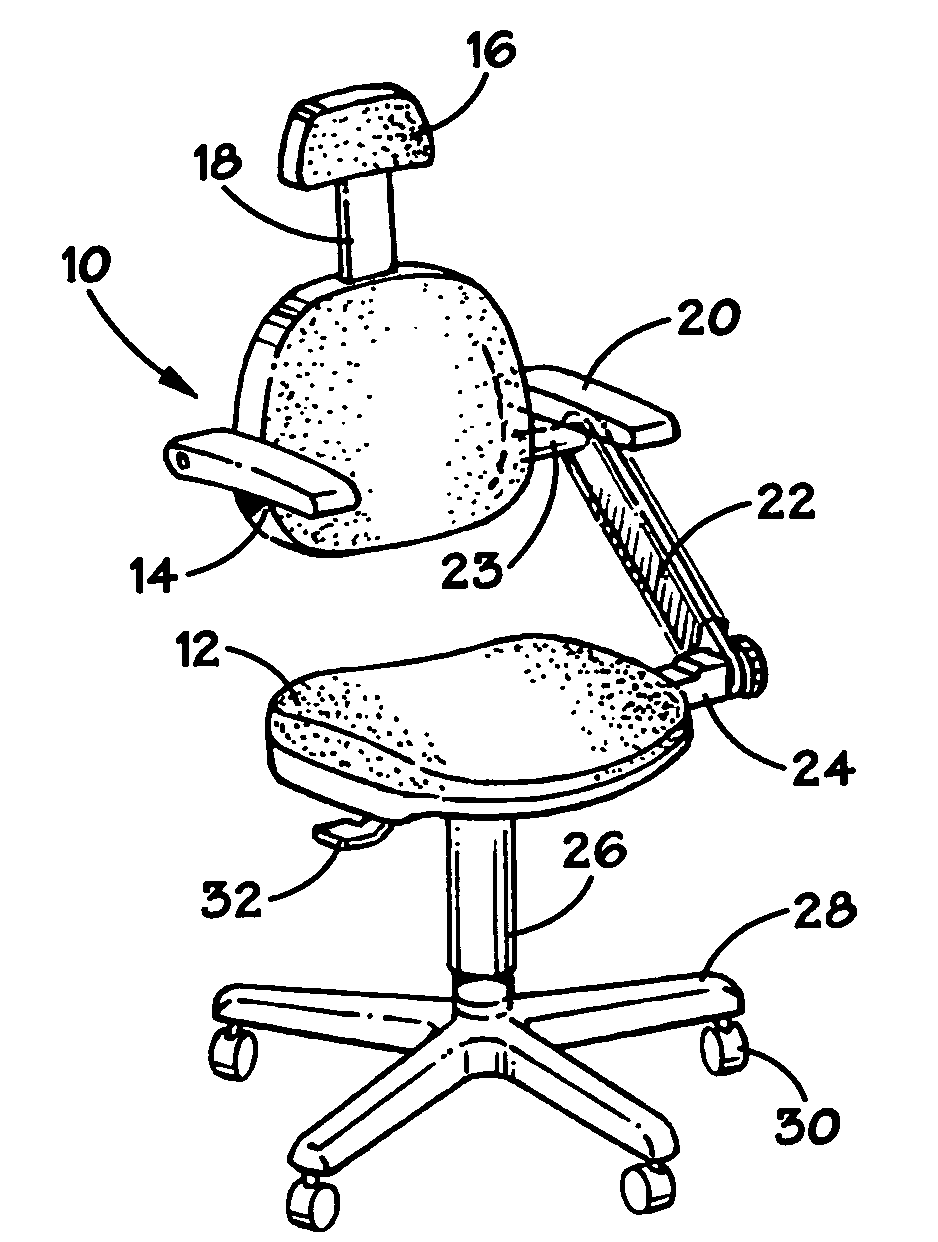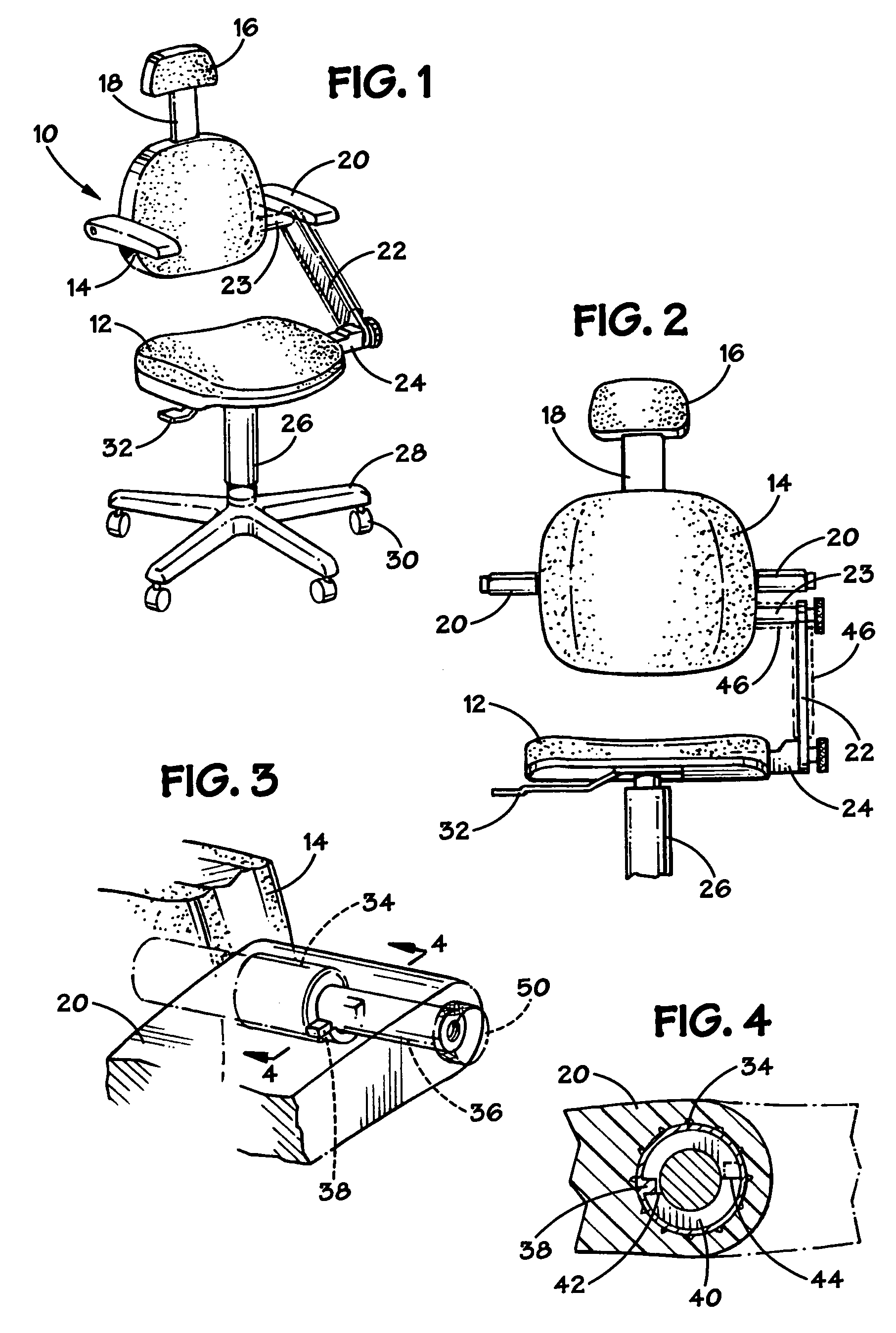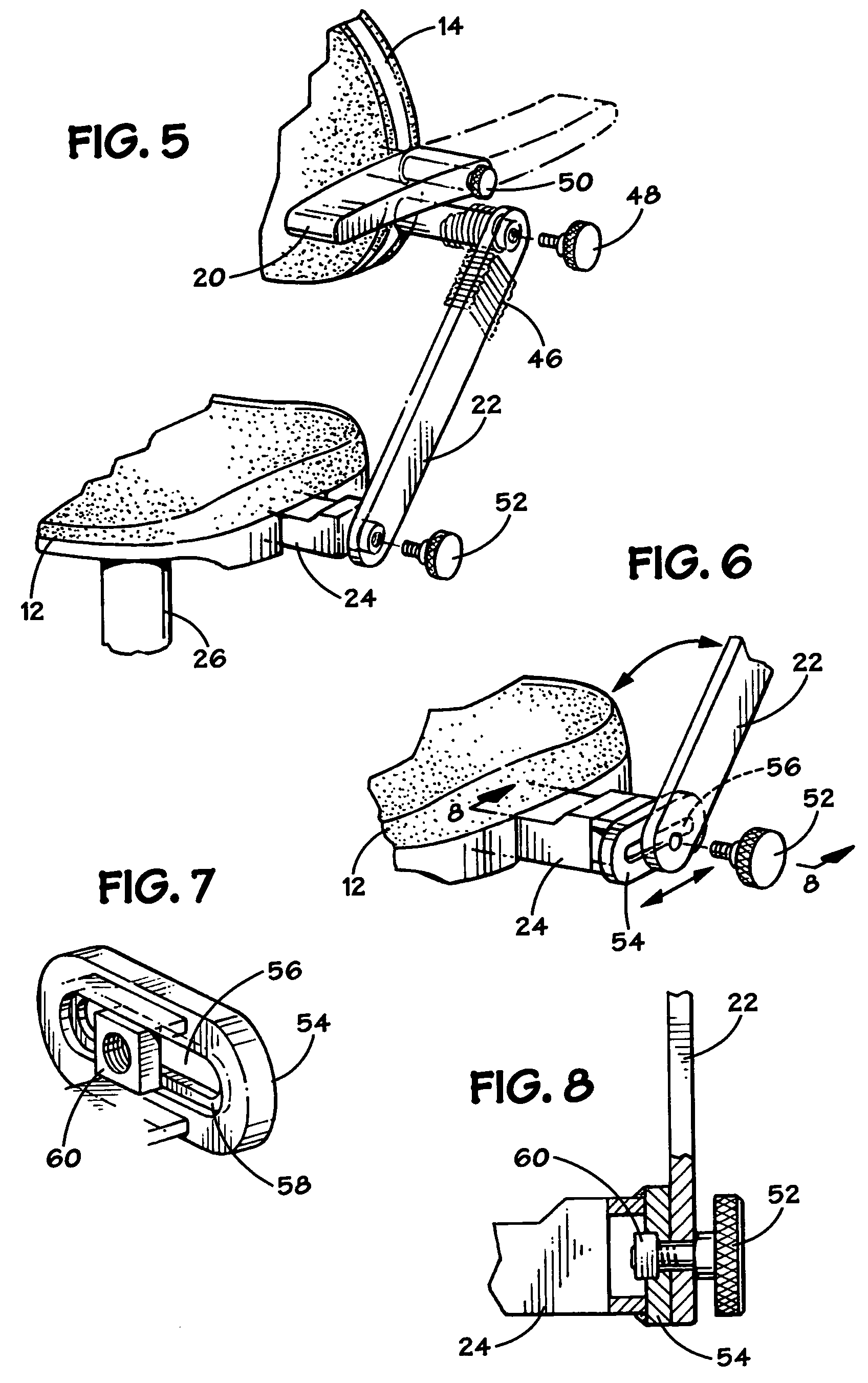Reversible chair
a chair and forward technology, applied in the field of chairs, can solve the problems of awkward user entry, unsupported back of user, and inability to adjust the forward mode, etc., and achieve the effect of not being suitable for all tasks, and being easy to fall o
- Summary
- Abstract
- Description
- Claims
- Application Information
AI Technical Summary
Problems solved by technology
Method used
Image
Examples
Embodiment Construction
[0022]FIG. 1 shows one particular embodiment of the invention as chair 10 which comprises seat 12, supported by seat support column 26 mounted on a conventional 5-member array of legs 28 each having a caster 30 near its distal end. Support column 26 may comprise a gas cylinder actuated by seat height adjustment lever 32 for adjusting the height of seat 12 relative to the legs 28. Other height adjustment means conventional in the art may be used in connection with support column 26—for example, a threaded rod or a ratchet mechanism. Support column 26 may also include swivel means for allowing seat 12 to rotate relative to the base comprising legs 28 and may also include tilt means for tilting seat 12 relative to the base.
[0023]Chair 10 may also comprise reversible front / back rest 14. As shown in FIGS. 1 and 2, rest 14 is positioned as a conventional backrest. Chair 10 may comprise headrest 16 connected to rest 14 by adjustable headrest support 18 which may allow the height of headres...
PUM
 Login to View More
Login to View More Abstract
Description
Claims
Application Information
 Login to View More
Login to View More - R&D
- Intellectual Property
- Life Sciences
- Materials
- Tech Scout
- Unparalleled Data Quality
- Higher Quality Content
- 60% Fewer Hallucinations
Browse by: Latest US Patents, China's latest patents, Technical Efficacy Thesaurus, Application Domain, Technology Topic, Popular Technical Reports.
© 2025 PatSnap. All rights reserved.Legal|Privacy policy|Modern Slavery Act Transparency Statement|Sitemap|About US| Contact US: help@patsnap.com



